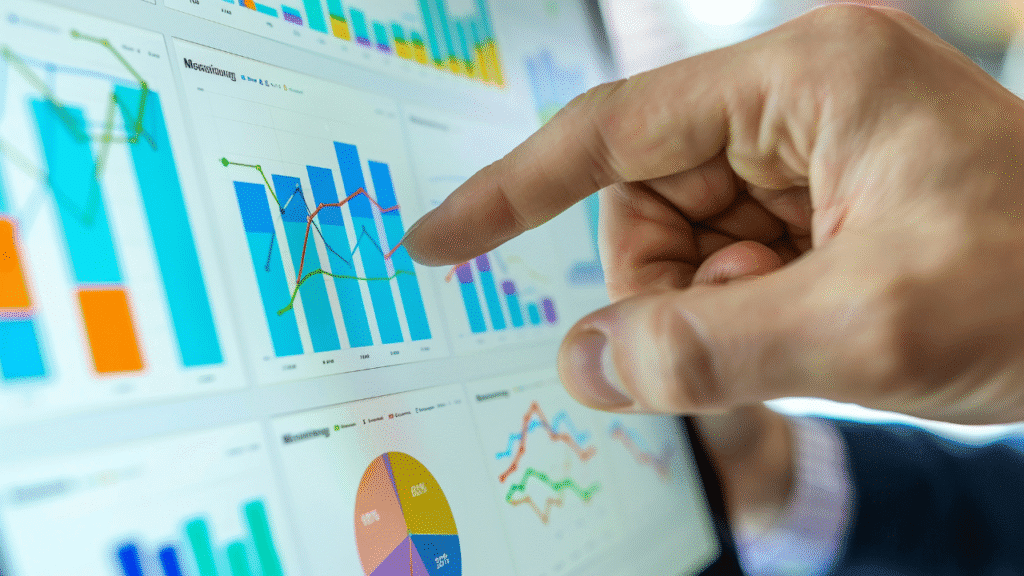The vague term interpretations was hanging somewhere at the junction of IoT and data analytics, transforming into real-time insights, predicting, and better decisions in the various industries. With those interlinked devices, billions could swell, the associated data being bright with promise. Advanced analytic methods on this same data give raw information the ability to be considered intelligence and thus become the driving force for innovation and efficiencies across many sectors.
Presentation of IoT and Data Analytics
What indeed is the ‘internet of things’?
The Internet of Things actually consists of a diversity of physical objects, whether possessing embedded sensors or using some other kind of software or technology that enables communication and data sharing with other devices and systems. Smart devices can be everything from home appliances that give an efficient and increased household experience to those used in factories that collect and send data.
What is Data Analytics?
Data Analytics is the art of investigating a data set to answer inquiries on what information is in that set. For instance, billions of connected devices in IoT will generate huge amounts of data, which can then be subjected to analysis processes with the aim of highlighting patterns, correlations, and trends to help support decision-making.
The Fusion of IoT with Data Analytics
IoT with data analytics forms a very potent ecosystem whereby data sourced from disparate devices would be captured analyzed and interpreted in order to yield insights. Such an ecosystem provides:
Instant Monitoring:
An immediate analysis means that quick responses can be made to ever-changing conditions.
Predictive Maintenance:
Anticipation of machine failure before it happens, leading to less downtime.
Operational Efficiency:
Processes are optimized according to data-driven insights.
Enhanced Customer Experiences: Personalized offerings based on consumer behavior insight.
Applications Across Various Industries
1. Healthcare
Such IoT devices as wearable fitness trackers and remote monitoring tools collect data about patients for analysis, which can then help achieve early detection of health problems, design personalized treatment plans, and enhance patient outcomes.
2. Manufacturing
IoT is being utilized by smart factories to monitor machine machines and production lines. Predictive maintenance, quality assurance, and supply chain optimization are done using data analytics to achieve high productivity far cheaper.
3. Agriculture
Farmers use IoT sensors to monitor soil moisture levels, changing weather phenomena, and crop health. Processing this data caps precision agriculture with yield maximization and better resource management.
4. Retail
Retailers are now implementing IoT devices to track inventory and consumer behavior. Data analysis can lead to tailored and personalized marketing, along with effective stock management, to enhance the customer experience.
5. Transportation
Connected infrastructure and vehicles have collected consistency in traffic patterns and vehicles’ performance data. An evaluation of such data enhances routing, minimizes congestion, and ensures safety.
Benefits of the integration of IoT and Data Analytics
Decision-Making: Real-time data enhances informed and timely decisions.
Cost Reduction: Predictive maintenance and better operations strip costs.
Innovation: Data-driven insights may yield new products and services.
Customer Satisfaction: A personalized experience, along with enhanced service quality, ensures customer retention.
Challenges and considerations
1. Data Security and Privacy
With the diversity of collected data, the safekeeping of user data alongside user privacy becomes a major thing. Strong cybersecurity measures must be engaged.
2. Data Integration
IoT devices usually have different protocols and standards; therefore, data integration becomes a hard nut to crack for engineers. Therefore, interoperability is a prerequisite for effective analytics. IoT Business News
3. Scalability
The increasing number of connected devices should as well reflect on corresponding scaling of their systems so as to handle the amount of data without enabling performance degradation.
4. Data Quality
The highest degree of accuracy and trustworthiness in data must be upheld. Such anomalies of the variable would damage the analytics or decisions.
Future Outlook
IoT and data analytics will become one as artificial intelligence and machine learning get more sophisticated. These technologies will steer systems towards smartness across sectors in furthering the capability and automation. More advanced IoT applications will arise with the rollout of 5G networks, harnessing improved bandwidth and lower latencies to push innovation to unprecedented levels of efficiency.
Conclusion
The union of the IoT with data analytics is changing how businesses are run; it shall now pave the way to create insights and efficiencies not witnessed before. Organizations adopting this union in their processes shall be able to explore new horizons, create value through innovation, and compete with the best in an ever-more connected world.
Frequently Asked Questions
Q1: What is the role of analytics within the ecosystem of IoT?
Data analytics utilizes value-adding processing and interpretation of the data explosion caused by IoT devices to transform it into insightful actionable direction for decision making and optimizing its operations.
Q2: What difficulties have been met in the bringing together of IoT and data analytics?
Access control and data security and privacy issues; heterogeneous and disparate data sources; data quality issues; and scalability of the systems handling huge volumes of incoming data are some of the challenges.
Q4: Which industries are most affected by IoT and data analytics?
Healthcare, manufacturing, agriculture, retail, and transport are the most impacted sectors from the integration of IoT and data analytics.
Q5: What is in the future of IoT and data analytics?
The future revolves mostly in greater assimilation with AI and machine learning, rolled by the launch of more improved features regarding 5G networks in the development of much more intelligent autonomous systems across sectors.



